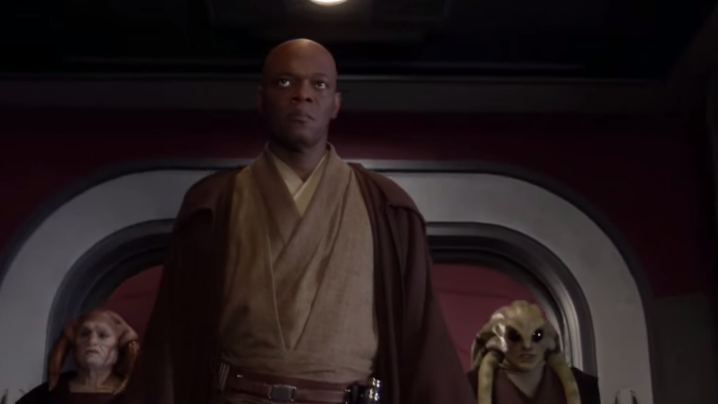[ad_1]
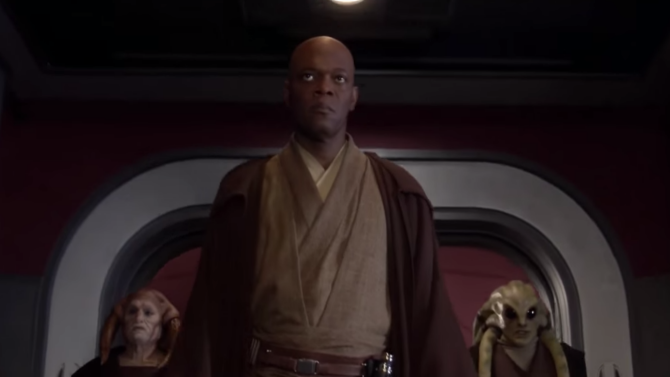
Samuel L. Jackson as Mace Windu in Star Wars: Revenge of the Sith
Revenge of the Sith via YouTube screenshot
The intentionally chosen May 4 is National Star Wars Day. Yes, May 4, as in “May the 4th be with you,” playing off the classic “May the force be with you” line from the movies. While the holiday officially started in the ’70s (with the British), it has kicked into hyperdrive over the last few years as Disney has sought to make Star Wars an all-consuming cultural phenomenon again. And I, like all God-fearing Americans, will be consuming all that is Star Wars over the next 24 hours.
Because unlike with other American cultural phenomena that clearly have no place for black people (e.g., Friends, Lord of the Rings, Crocs or the Bush administration), African-American actors and actresses always played a big role in the Star Wars films, books and toys, long before “diversity” was trendy. How black-friendly is Star Wars? In 2013 Verizon ran a commercial featuring a black family dressed as Star Wars characters for Halloween, and nobody blinked. How’s that for cross-cultural penetration? “A galaxy far, far away” has always been one of the most welcoming places for black folks in American film history. Here are a few roles that make May the 4th worth celebrating.
Samuel Jackson (Mace Windu), The Phantom Menace (1999)
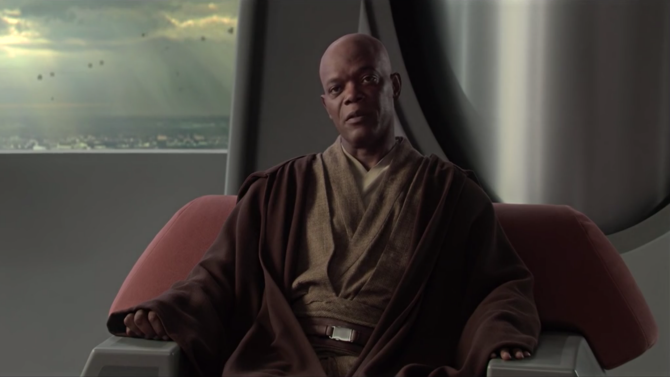
Samuel L. Jackson as Mace Windu
Revenge of the Sith
Samuel Jackson’s Jedi Master Mace Windu was probably the best part of the lousy Star Wars prequel movies from the late 1990s. He brought a sense of power and strength to the Star Wars movies; has appeared in tons of video games, books and comics in subsequent years; and is generally regarded as the most powerful Jedi next to Yoda. Did we all want Samuel L. to bring a little bit of Jules Winnfield into his Jedi performance? Yes. Did he do it? Only on the Internet.
Billy Dee Williams (Lando Calrissian), The Empire Strikes Back (1980)
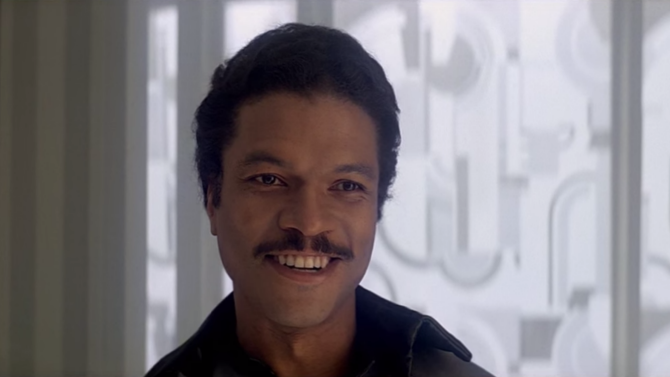
Billy Dee Williams
The Empire Strikes Back
While he was introduced as a “card player, a gambler and a scoundrel,” Billy Dee Williams’ Lando Calrissian played an integral role in The Empire Strikes Back (1980) and Return of the Jedi (1983). Lando gave black folks a character to cheer for and believe in, and with his ’70s cape and natural swagger, he put blackness squarely in science fiction, which was revolutionary at the time. He also inspired one of the best Star Wars fan films of all time—the hilarious parody Blackstar Warrior—which retells Star Wars from Lando’s perspective, making the universe a much blacker, funkier place.
Femi Taylor (Oola), Return of the Jedi (1983); Gin Clarke (Adi Gallia), Phantom Menace (1999); Lily Nyamwasa and Nina Fallon (Stass Allie), Attack of the Clones (2002) and Revenge of the Sith (2005); and Lupita Nyong’o (Maz Kanata), The Force Awakens (2015)
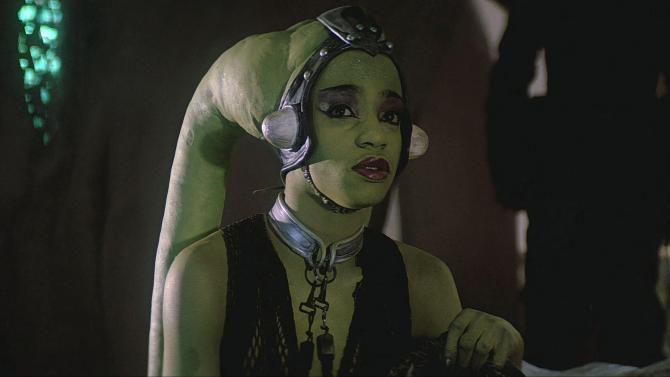
Femi Taylor as Oola in Return of the Jedi
Return of the Jedi via YouTube screenshot
Science fiction, especially on the big screen, isn’t just a white club; it’s a boys club. This is one of the ways that Star Wars really stands out, because unlike in most science fiction, black women have been in various Star Wars film roles for almost 40 years. Some are Jedi Masters, some are technicians and some are warriors.
Now, that doesn’t mean Star Wars is perfect when it comes to black women. Many of these roles for women of color are small parts or just plain old problematic. The first black woman to appear in a Star Wars film is Oola, the dancer-slave who got eaten for rejecting her master. In Revenge of the Sith, producers thought it was OK to do some Saldana-Nina Simone-level nonsense and use CGI blackface to replace actress Lily Nyamwasa with visual-effects coordinator Nina Fallon to play Jedi Master Stass Allie (yes, blackface was bad in 2005, too). And in 2015’s The Force Awakens, a major black actress, Lupita Nyong’o, was cast, but she’s only providing the voice for a CGI character who looks like a talking orange with swim goggles. But compared with the Marvel movies, where only one black woman has had a speaking role in more than 10 films, Star Wars’ record with black women is exceptional.
John Boyega (Finn), The Force Awakens (2015)
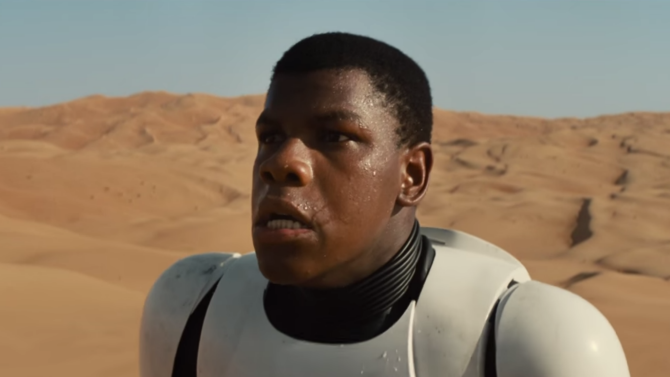
John Boyega as Finn in The Force Awakens
The Force Awakens via YouTube screenshot
John Boyega played Finn, the Stormtrooper gone AWOL who became part of the rebellion, only to be banished to the intergalactic friend zone at the end of the movie. Boyega gets props for his unapologetically pro-black and pro-Nigerian interviews and his ability to take down racist trolls who wanted to boycott a Star Wars movie starring a black man. Finn quickly became a fan favorite and the subject of “shipping” fan fiction for straight and LGBT Star Wars fans. Boyega is a great action-movie actor (check out the slept-on Attack the Block), so here’s hoping that in the next movie they’ll give him more to do than fetch Rey’s lightsaber and take out the garbage on Starkiller Base.
James Earl Jones (Darth Vader), A New Hope (1977)
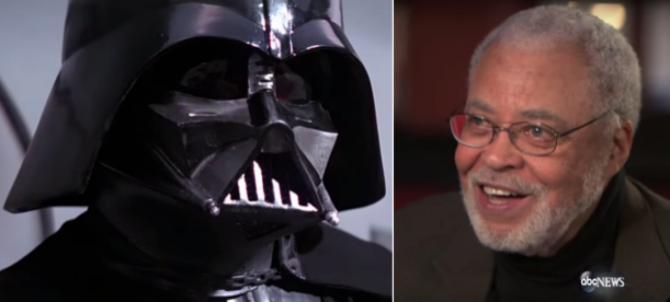
James Earl Jones as the voice of Darth Vader in Star Wars: A New Hope
Star Wars: A New Hope via YouTube/ABC News screenshot
Who can forget James Earl Jones as Darth Vader, perhaps the biggest, baddest villain in American film history? You can’t say the legendary actor “only” lent his voice to Darth Vader, since, for all of the first three Star Wars films, you never saw what Vader looked like under his mask anyway. Jones’ deep baritone gave the Star Wars films a level of menace without making them downright scary. Plus, Jones’ immense popularity as Darth Vader opened doors for many other African Americans to make long careers as voice actors, from Keith David to Cree Summer and, yes, even Samuel L. Jackson. That kind of legacy more than makes up for Star Wars giving us Jar Jar Binks almost 20 years later.
[ad_2]




















